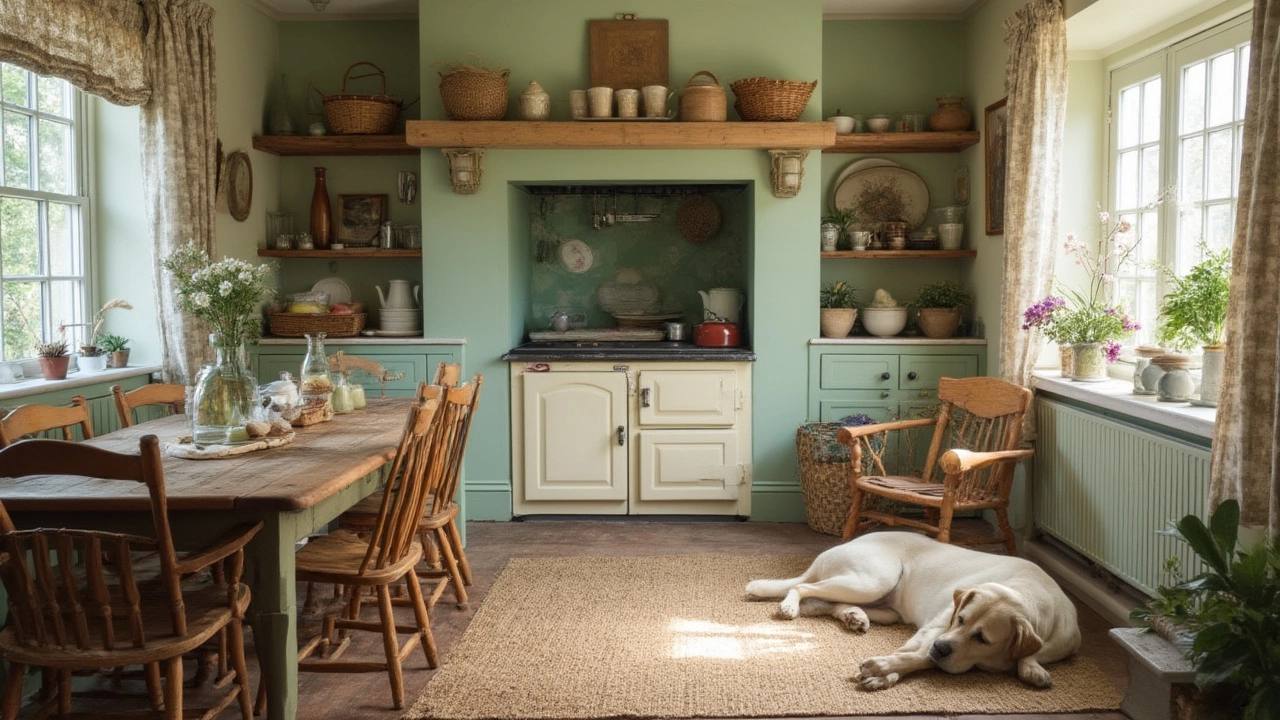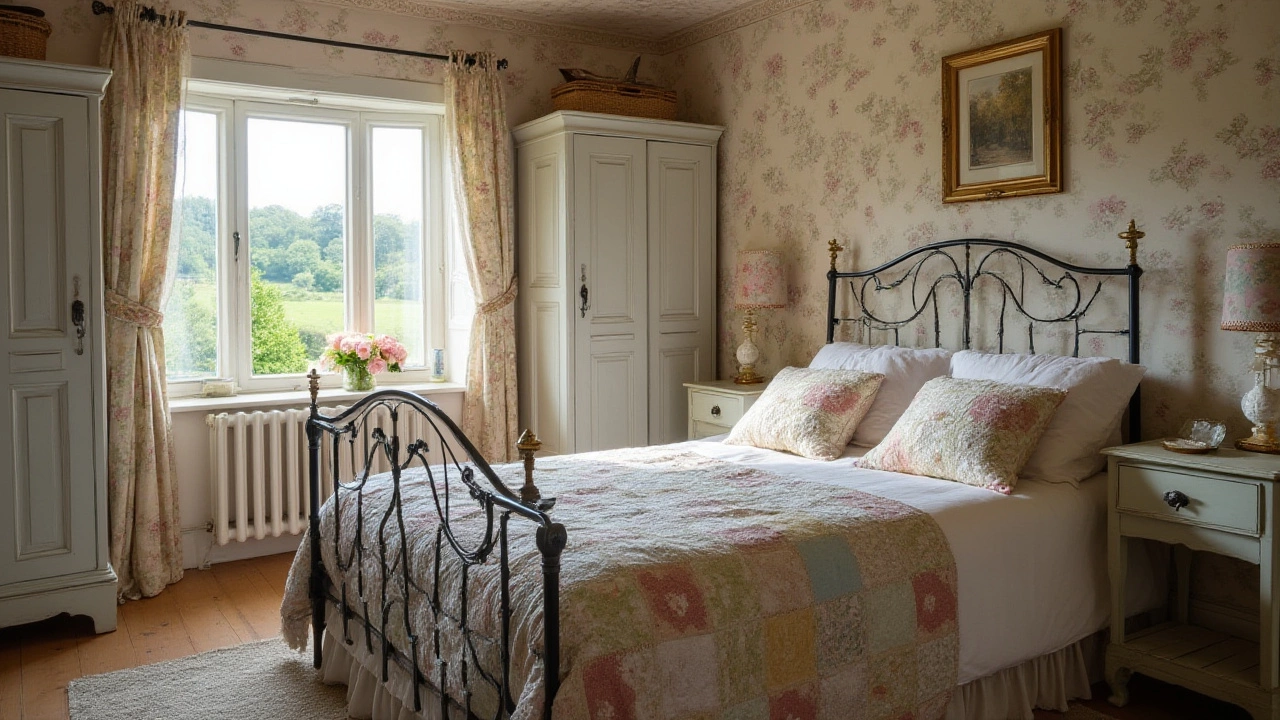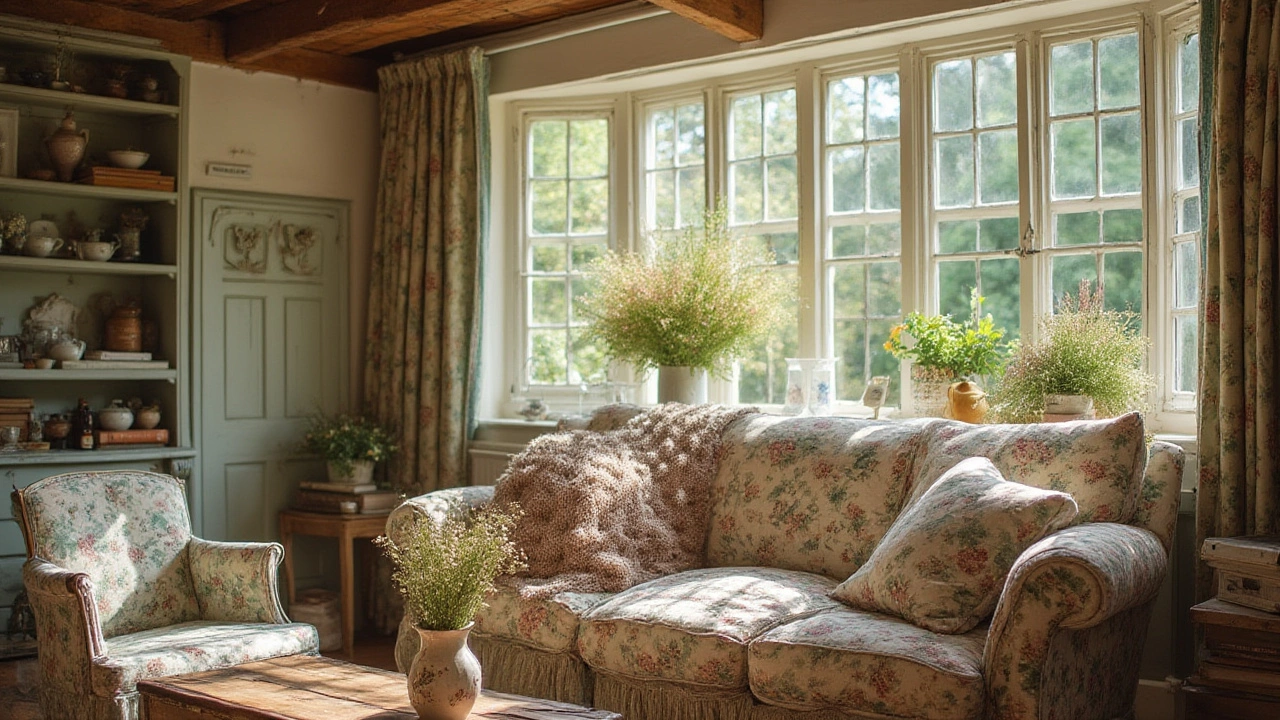You know that feeling when you spot a photo of a tiny cottage nestled in the countryside—stone walls, overflowing window boxes, soft sunlight, and the kind of inviting chaos that makes you just want to curl up with a book and a fat cat? There’s something about country cottage style that gets under your skin. Turns out, you don’t need a thatched roof or a Cotswolds postcode to get that vibe at home. People everywhere are ditching the sterile look and craving warmth, softness, and history in their spaces. If you’re ready to swap out hard lines and greige for chintz, quilts, and a sense of gentle nostalgia, you’re in the right place.
What Makes a Home Feel Like a Country Cottage?
If you think about classic country cottages, the magic ingredient isn’t the floorplan or the building material—it’s the mood. Cottage style is all about comfort, coziness, and lived-in charm. There’s plenty of layering: faded florals on the curtains, mismatched dishes on wooden shelves, sprigs of wildflowers on the window ledge, and a chunky throw tossed on a battered armchair. Don’t worry, you won’t need to track down century-old beams or rickety staircases. The real trick? Bringing in texture, color, simple patterns, and a bit of that I-just-picked-this-up-at-the-market flair.
Warmth and imperfection are your best friends. Think natural woods, baskets, pottery, hand-thrown mugs, and anything that feels like it’s had a life before it landed in your house. The country cottage look doesn’t follow trends—sometimes you spot a wall calendar from 1993 or a bowl your grandmother made an apple pie in—and that’s the soul of it.
Light is huge in cottages. Even small country homes find a way to make rooms feel open: pale wall colors, gauzy curtains, and clever mirror use. But coziness isn’t about perfection. If there’s a scuff or scratch, that’s more charm for your cottage. When you step inside, you want to breathe a little easier and forget about perfection, because it’s not about impressing anyone—it’s about making you feel good.
When it comes to data, a 2023 home trends survey from Houzz found that 43% of homeowners purposely added vintage or ‘found’ items to their living spaces, and searches for ‘cottagecore’ jumped 92% in 2023 alone. This is not just about aesthetics—it’s about feeling grounded, comfortable, and relaxed within your own four walls.
Bringing in the Essential Cottage Furnishings
The first step is furniture, since that sets the stage. You don’t need to toss out everything you own and go antique-shopping across the countryside. Blend in some signature pieces—maybe a squishy, slipcovered sofa, a farm table with mismatched chairs, or a painted hutch that looks like it’s had years of lemonade spills. It’s that mix of handed-down treasures and humble new finds that makes a space inviting.
Like the look of a classic cottage kitchen? Go for open shelving with stacks of colorful plates, maybe a chunky wood countertop, or a skirted sink. For living rooms and bedrooms, look for old quilts, faded Persian or rag rugs, and storage baskets. Swap out anything shiny or too modern for pieces with a bit of woodgrain or age, even if you need to distress them yourself.
Here’s what the furniture lineup often looks like for the *country cottage decor* crowd:
- Soft, overstuffed chairs and couches in gentle florals or wheat-colored linens
- Painted dressers in cream, muted sage, or faded blue
- Wicker or rattan accents: chairs, trunks, baskets
- Reclaimed or whitewashed wood tables—think pine, oak, or elm
- Simple side tables, sometimes with turned legs or a spot for a lamp and a novel
- Iron or brass bed frames, or old-fashioned wooden headboards
And don’t forget the smaller stuff: crockery pitchers for flowers, piles of well-thumbed books, and vintage lampshades. In my own place, I once found a floral pillow at a church sale that accidentally started the whole look—and it’s been sitting proud on my couch ever since.
Comfort wins every time—don’t worry if nothing matches exactly. The trick is to make things feel like they’ve come together over time, not straight out of a catalog.

Color Palettes, Patterns, and the Power of Nature
Country cottages do color differently. You’re not going for bold, contemporary statements—think faded, gentle, happy colors inspired by gardens and old textiles. Whites, creams, and soft greys open up small rooms, while sage, duck egg blue, dusty rose, and buttery yellow give warmth. Accent with little splashes: the red from a strawberry potted plant, the blue floral on a teapot, the green from a jumble of houseplants in the window.
Patterns are a big deal. Mixing is allowed (actually, it’s encouraged). Go wild with gingham, old-school chintz, ticking stripes, and tiny florals. Want a trick for mixing patterns? Make sure everything shares at least one color. A set of blue gingham napkins pairs sweetly with a floral tablecloth with blue in the print. For walls, there’s nothing like classic wallpaper in a small print—hydrangeas, trailing vines, or faded damask can give instant vintage appeal. And if you’re brave, you can even experiment with painted backsplashes or a stencil border, channeling those English cottages that have cheerfully ignored trends for centuries.
No cottage feels complete without a bit of nature, indoors and out. Houseplants are having a moment, but in country style, they look just as good in a chipped enamel pitcher as in a designer pot. Fill kitchen jars with cut wildflowers, press leaves in gilt frames, or hang a bunch of dried lavender by the sink.
Here’s a quick table showing color popularity in cottage interiors, based on a 2024 UK Country Living survey:
| Color | % of Cottages Using |
|---|---|
| Cream | 68% |
| Sage Green | 54% |
| Duck Egg Blue | 49% |
| Rose Pink | 37% |
| Warm Grey | 28% |
The bottom line: let your space look like it’s grown naturally, with layers and bursts of personality from the garden or a favorite antique find. Natural light adds even more, so ditch heavy drapes for light, floaty curtains whenever possible.
Adding Character With Details, Decor, and Cottagecore Flair
Country cottages are experts at adding charm through details. The small touches pull everything together and turn a regular room into a space you never want to leave. Vintage hooks on the backs of doors, a painted bench in the hallway, or a collection of enamel tins on open shelves—these are the things nobody else will have exactly.
If you want to go full cottagecore, let imagination lead the way. Hang lace curtains for that dreamy light, layer your bed with four different pillows in prints that don’t match but somehow work, and invest in a few old-fashioned lamps with pleated or crocheted shades. Those details soften everything. Even things like a peg rack for hanging baskets, or a simple display of favorite mugs, can make your place feel handcrafted and real.
Don’t underestimate handmade. Embroider a pillowcase, knit a throw, or even make simple doilies from leftover fabric. Cottages often showcase little projects like hand-pressed flower art or jars of homemade preserves waiting on the kitchen shelf. If you bake, leave a loaf of bread out in a basket, just as much for looks as for eating.
Scent is the part people usually forget about, but nothing says cottage like the smell of fresh laundry, dried herbs, or bread hot from the oven. Try simmering orange peel, cinnamon, and clove on the stove—suddenly, your kitchen feels 10 times homier.
Here’s a list of no-fail cottagecore details to try:
- Pressed flowers in old picture frames
- Tea tins turned utensil holders
- Patchwork or crochet blankets on the sofa
- Handwritten recipe cards pinned up in the kitchen
- Chipped enamel jugs stuffed with wildflowers
- Weathered photo albums on a table for guests to browse
Your home’s history is part of its beauty, even if you started it yesterday. The best cottages feel personal, full of stories—and so should yours.

From Porch to Garden: Creating a Cottage Environment Outside
The inside is only the beginning; the real cottage magic happens when you step onto a porch, patio, or into the garden. Luckily, you don’t need rolling acres. Start with a window box brimming with petunias or nasturtiums, or hang a vintage lantern outside your door. A small bistro table and two chairs, painted a happy color, can transform even a tiny stoop into a breakfast spot.
If you have a patch of yard, lean into wild, layered plantings instead of formal hedges. Cottages thrive on a sense of ‘organized chaos’: hollyhocks towering above foxgloves, herbs like thyme spilling out of stone planters, a patch of chamomile or lavender buzzing with bees. For paths, gravel or worn brick are classic; add stepping stones or an old wheelbarrow planted with violets for a playful touch.
Not a gardener? No problem. Little touches count: a row of terracotta pots, a wicker chair with cushions, or even fairy lights strung between fence posts. The main idea is to blur the indoor and outdoor boundary, so it feels like the kitchen flows naturally out into the yard.
Porches and entryways are also perfect for layering personality. Try a vintage sign, a basket for muddy shoes, or a rustic bell by the door. Hang a windchime or leave out a stack of firewood for visual warmth (plus it’ll smell amazing after a rain). In the evening, lanterns or solar fairy lights add instant enchantment.
For those who rent or don’t want to make big changes, even a scattering of daisies in a jar or a thrifted garden sculpture by your steps can set the tone. Let things be a little wild and welcoming—the opposite of uptight or overdesigned.
